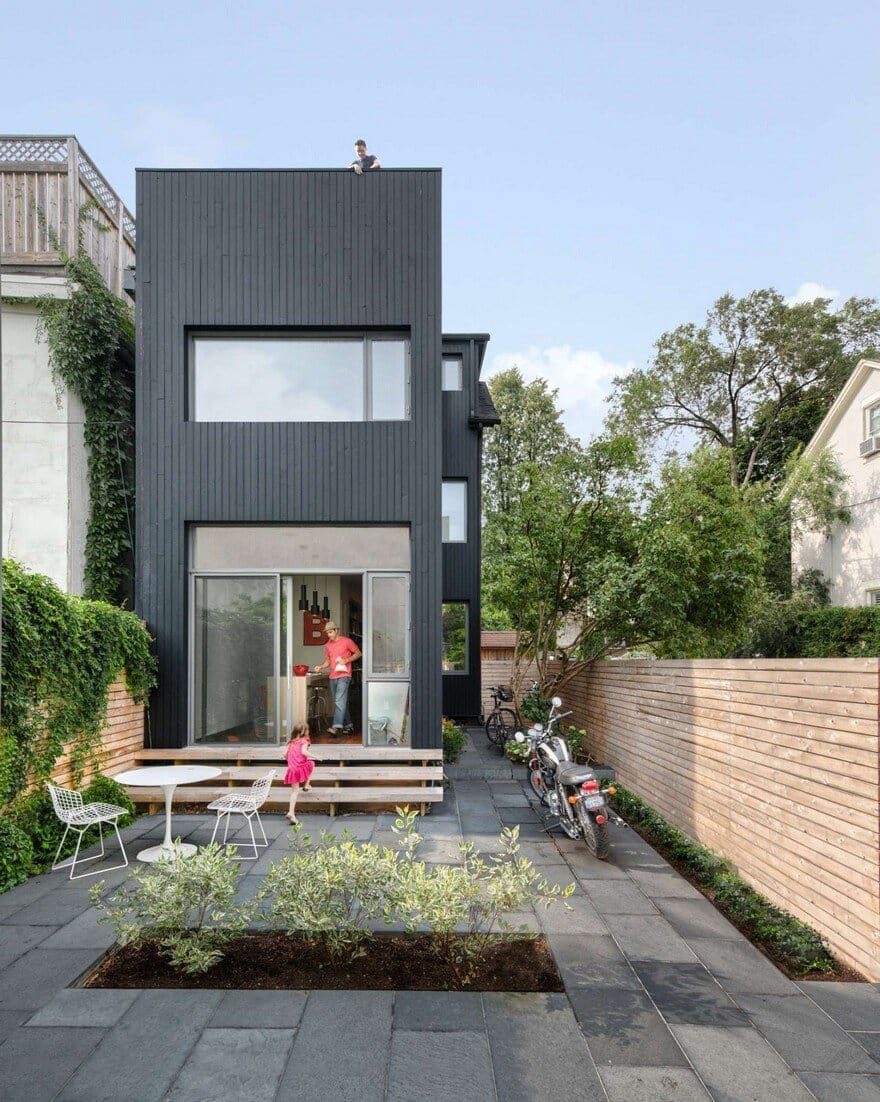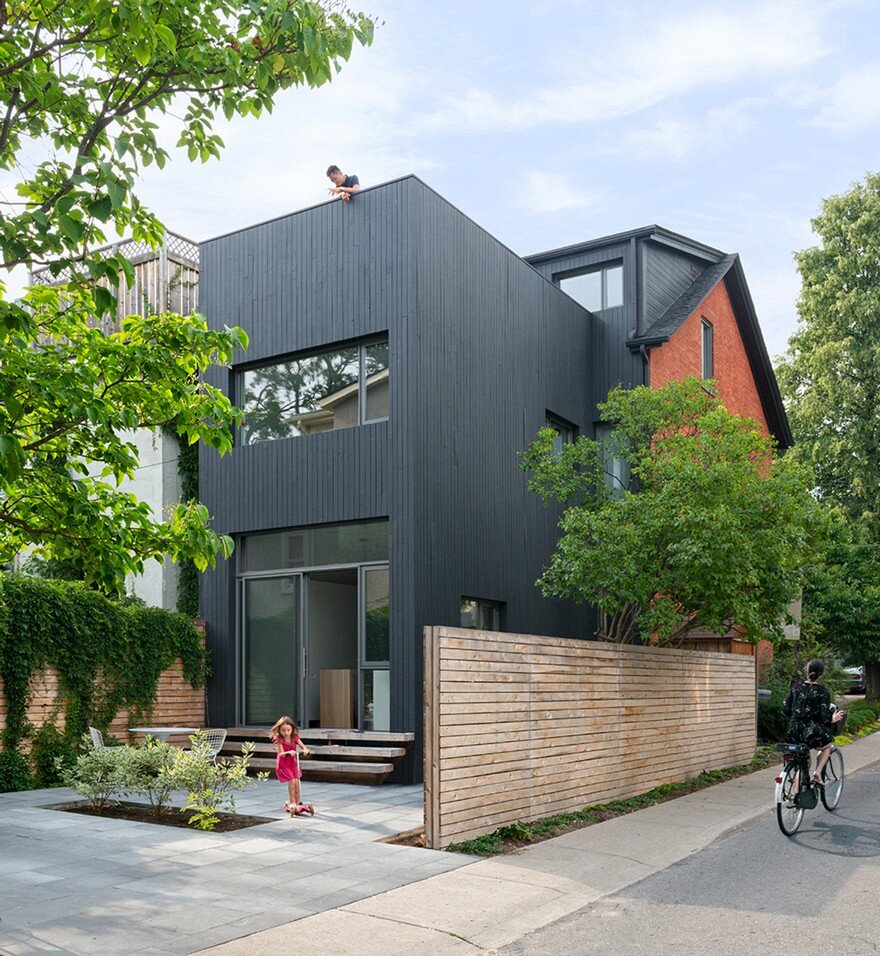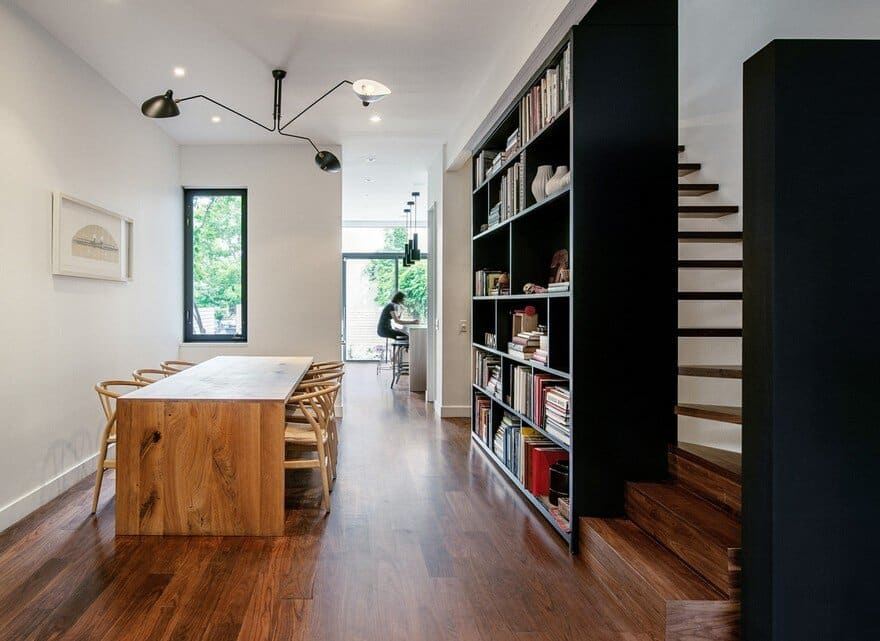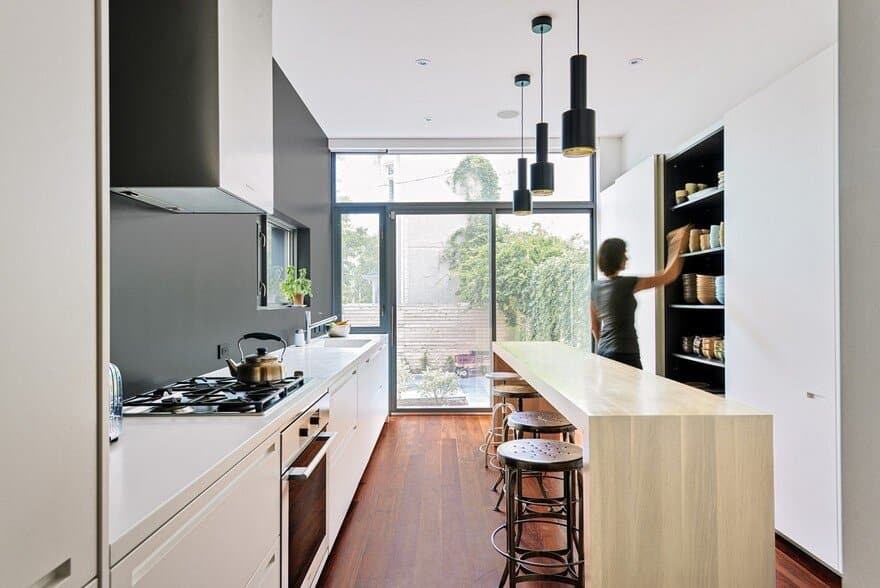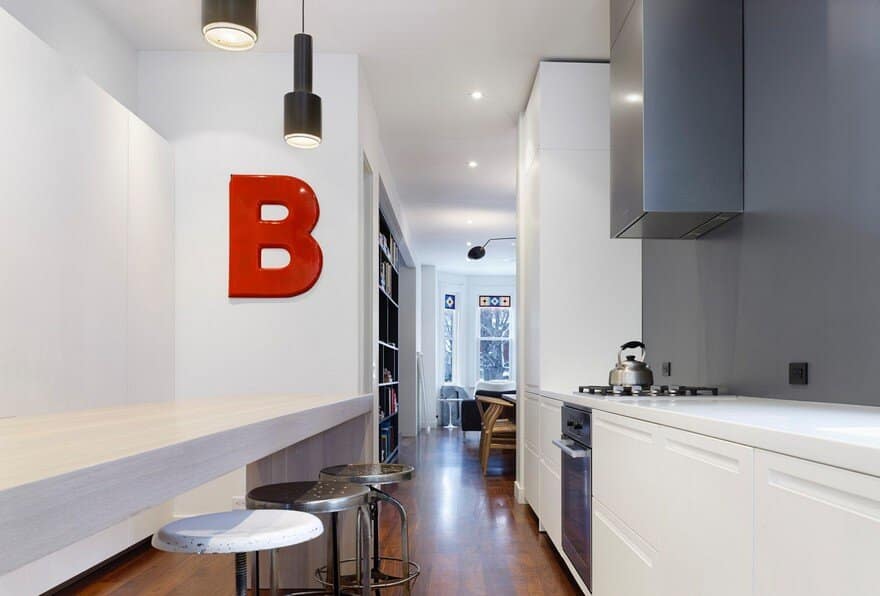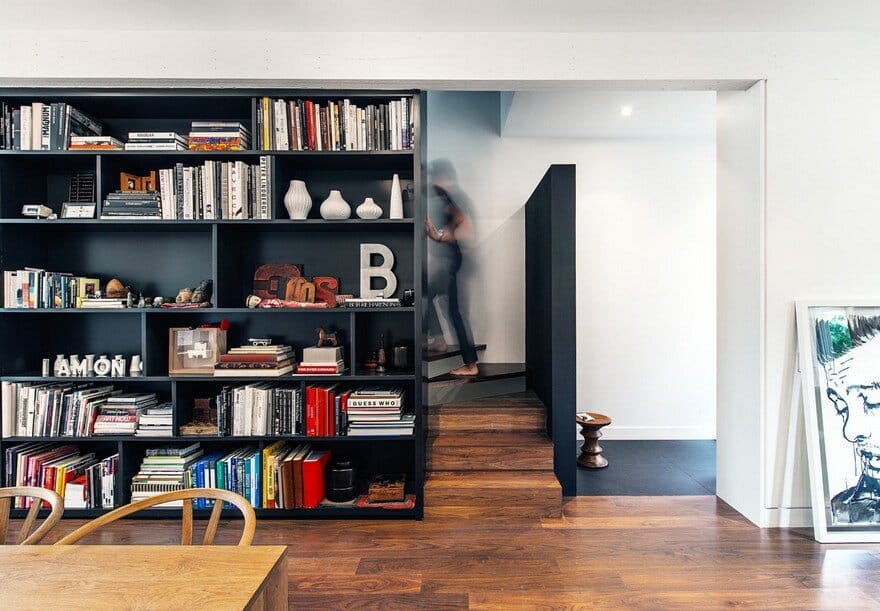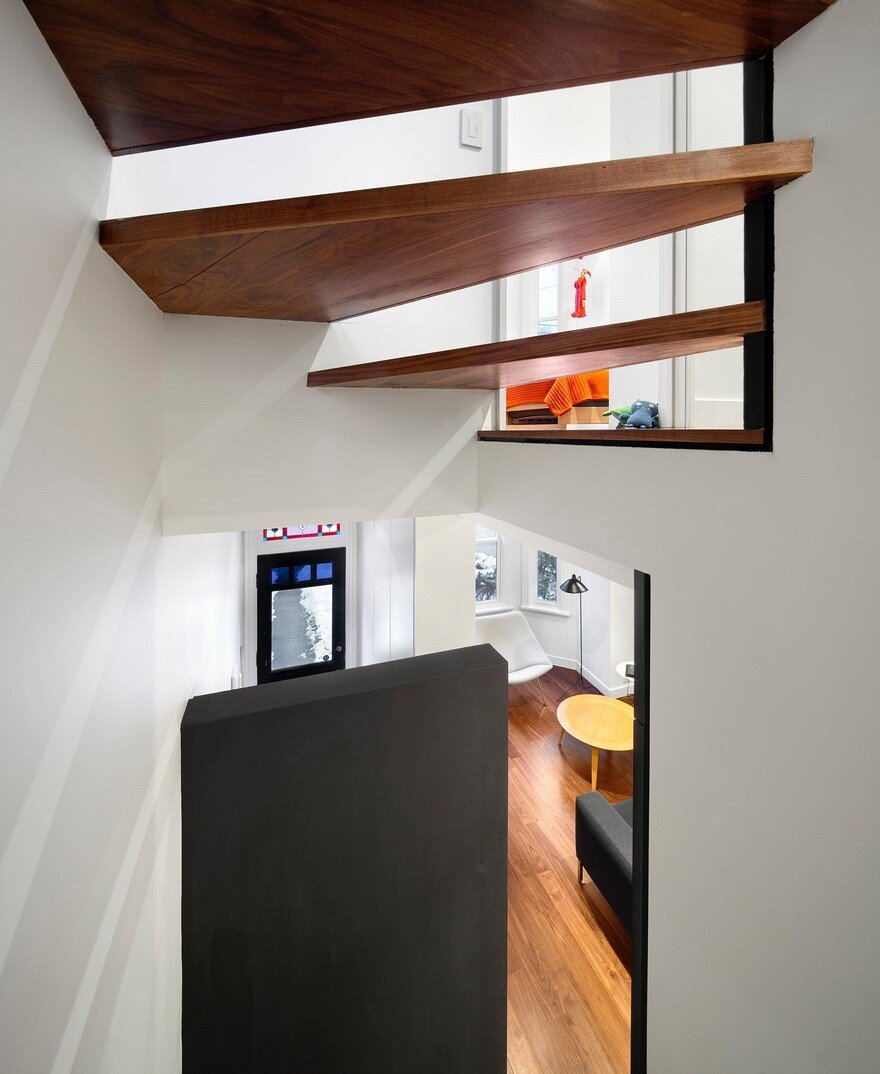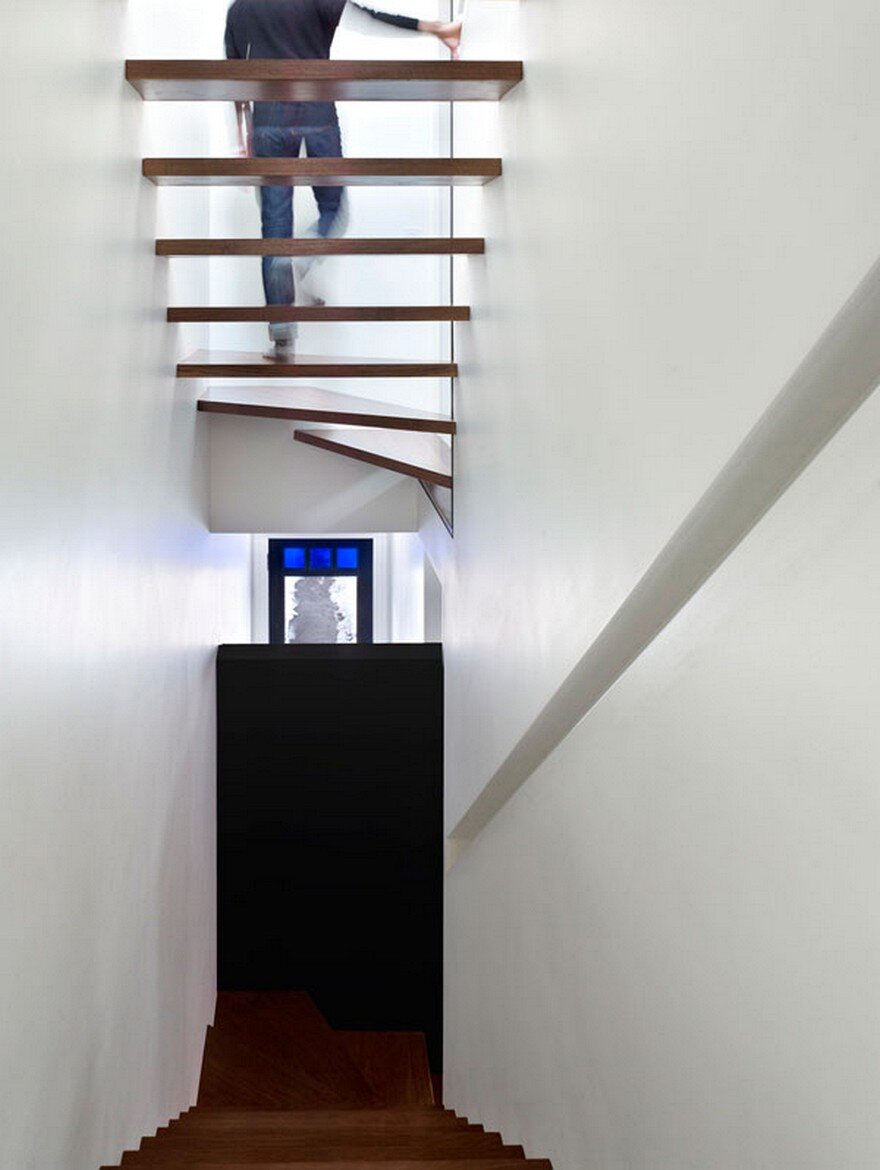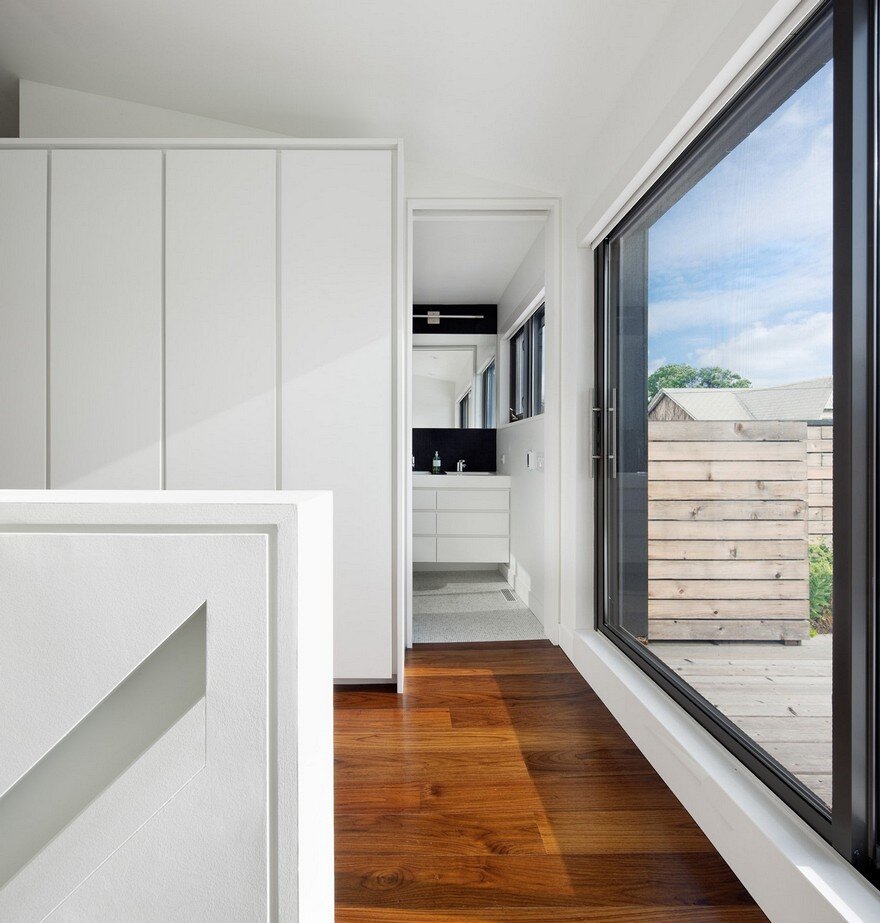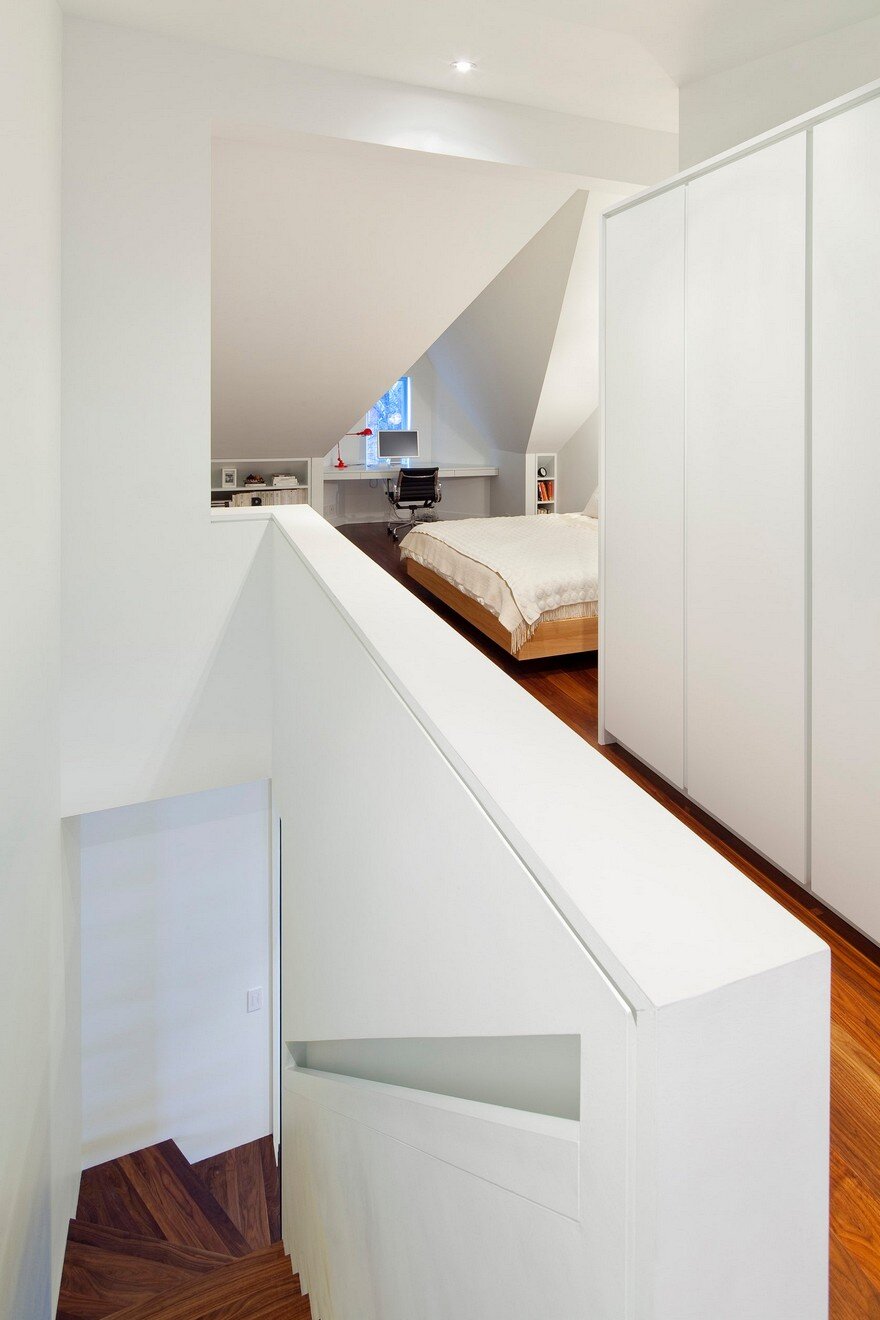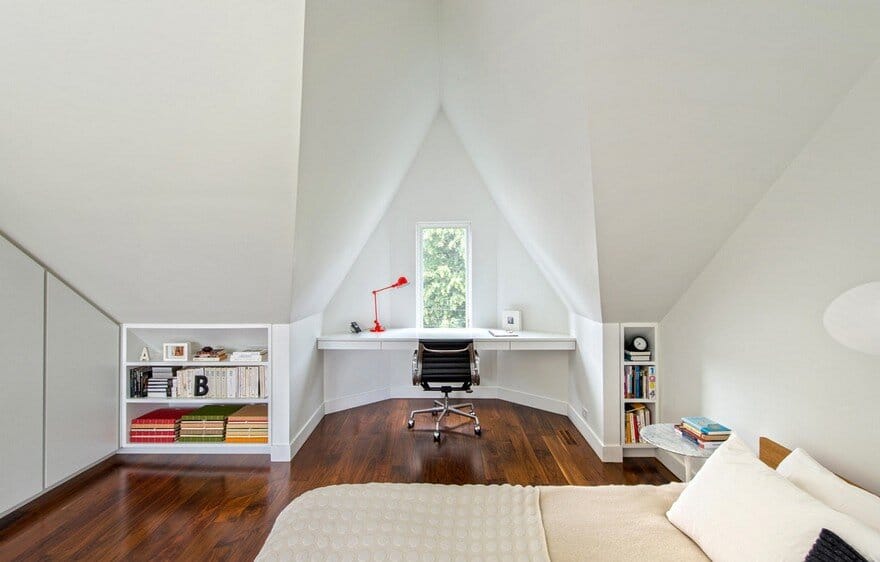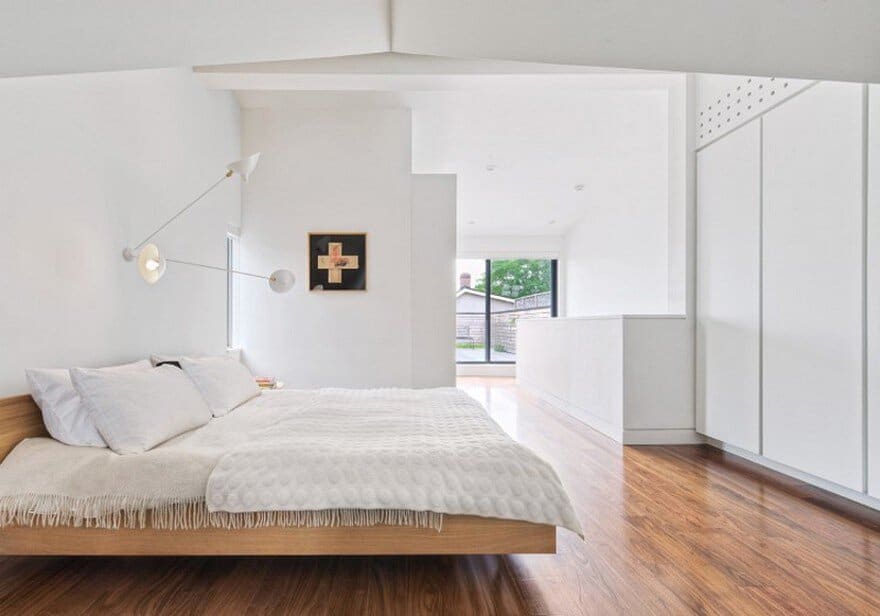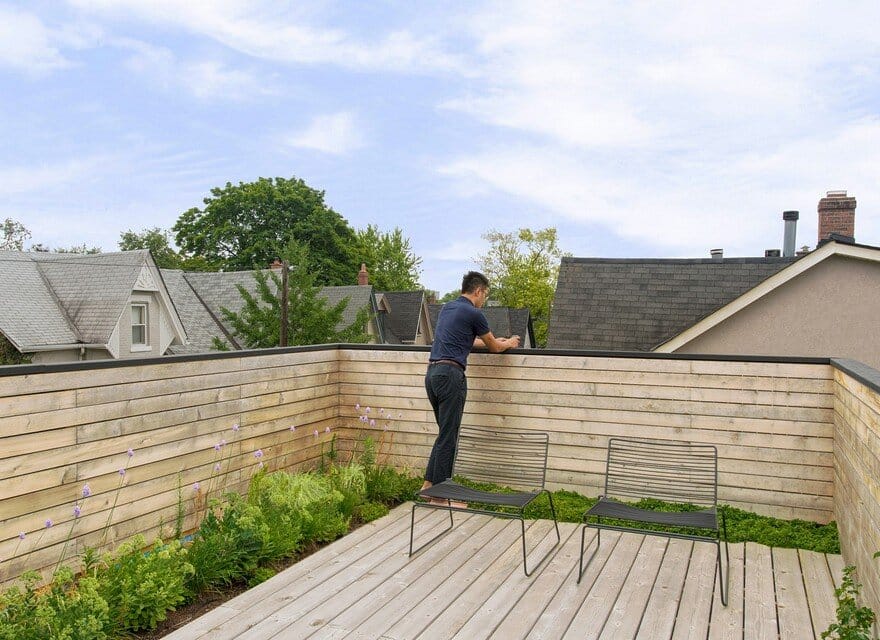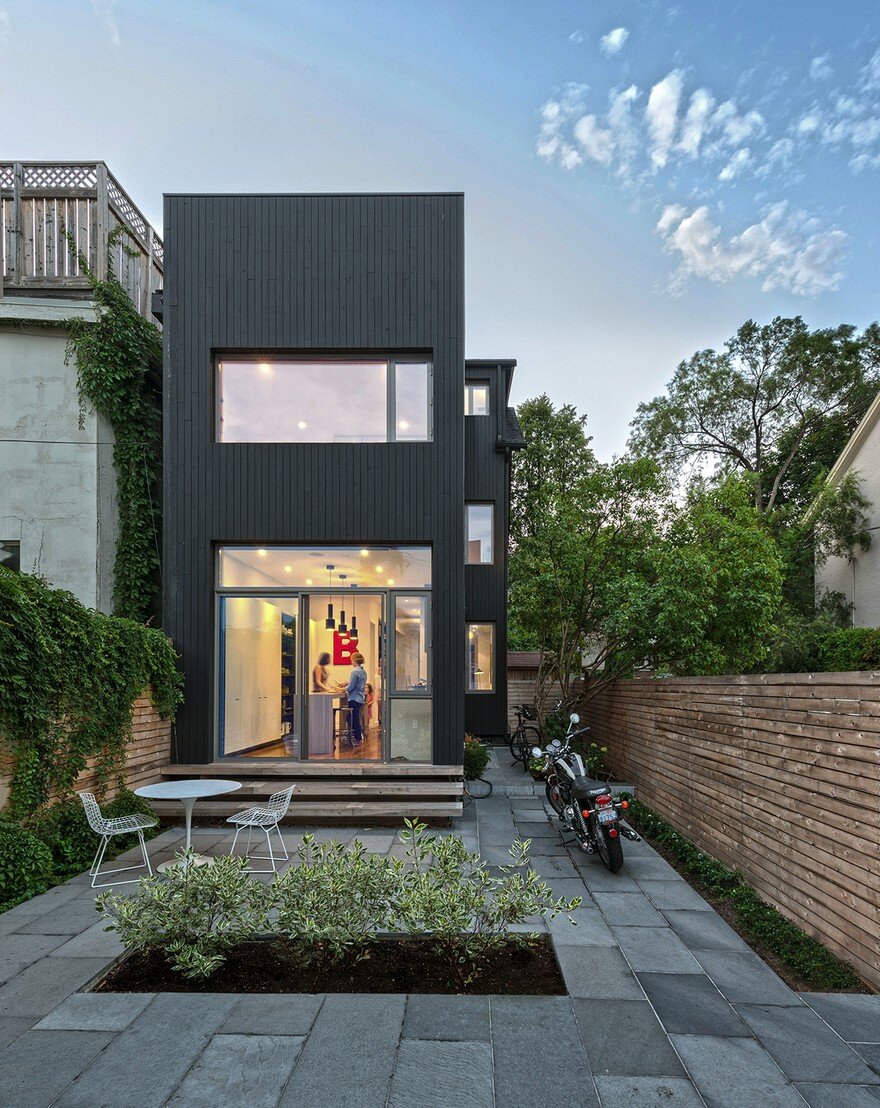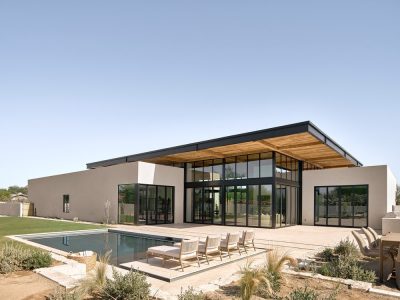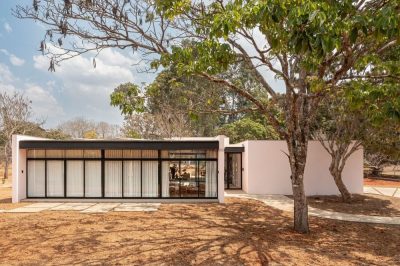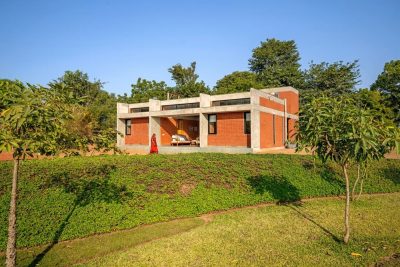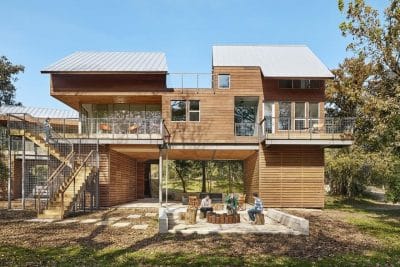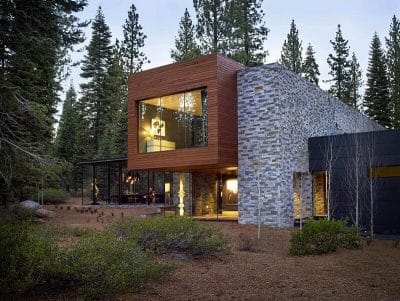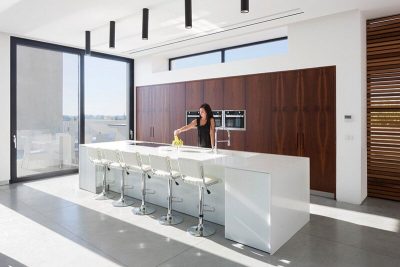Architects: Dubbeldam Architecture + Design
Project: Contrast House
Project Team: Heather Dubbeldam, Oliver Dang, Jacob JeBailey, Bindya Lad, Rachel Tameriao
Location: Toronto, Ontario, Canada
Area: 1,850 sq. ft.
Photography: Tom Arban and Bob Gundu
Contrast House is a simple and elegant renovation/addition that combines beautiful design with impressive energy performance. The project was designed by Toronto-based Dubbeldam Architecture + Design.
From the architect: Situated on a corner lot in a dense Toronto neighbourhood, the intent of the remaking of this narrow 125-year-old residence was two-fold: to increase natural light in the interior using contrast, and to reduce the house’s ecological impact.
An increase of natural light is accomplished through both physical and perceptual means. Physically, the long, narrow house – only 11 feet wide on the rear façade – was reconfigured to allow direct sight lines to new window openings. Perceptually, contrast was used as a means to “brighten” internal spaces without direct access to natural light.
Contrasting elements are placed in proximity to produce an intensified effect. At each level, the stair is punctuated by a black element to define space — be it floating bookcases housing the owner’s collectibles, or a chalk board wall for play — and to create contrast to visually intensify the natural light spilling down from above.
The monochromatic palette — walnut floors, white and dark gray walls — highlights the house’s architectural forms and lines, but is animated by the family’s collection of colourful furniture, art, books, and toys. The tonalities and concept flows from inside to out.
Clad in black-stained cedar vertical boards soaring upward to conceal the modest roof deck behind, the exterior is a bold counterpoint to the red brick Victorian dwelling to which it is attached. Many passive sustainable systems are employed to minimize environmental impact.
The reconfigured layout, location of the stair and new operable windows maximize natural ventilation, stack effect, and daylighting, reducing the need for both air conditioning and artificial lighting. Integrated with the roof deck, a green roof absorbs rainwater and provides a cooling effect for the upper floors, further reducing the dependency on utilities.

